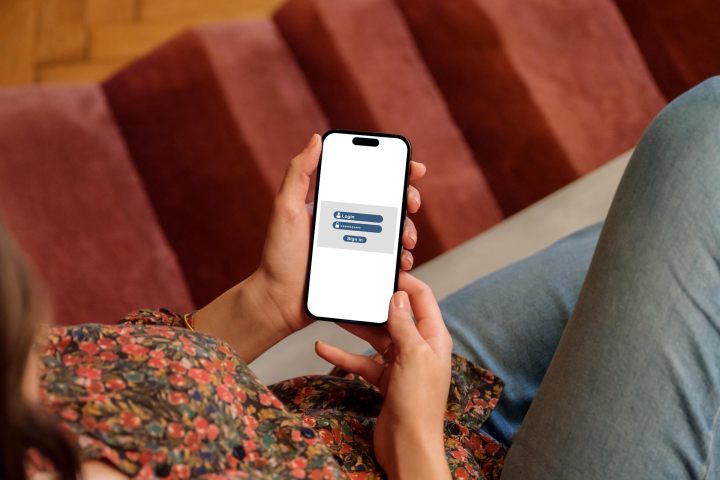
As password management becomes more challenging because of the tons of logins we have to keep track of, it may be time to move beyond the default Apple Keychain for passwords on your iPhone. You may want a tool that seamlessly syncs with your Windows computer or offers extensions for web browsers other than Safari.
For safe and solid options to maintain passwords and logins on iOS, this list provides you with the features, security measures, and prices for the best password managers on iPhone.
Something to keep in mind is that Apple’s own Password app arrives with iOS 18 in fall 2024.
Bitwarden

If you’d like to try out a free password manager, Bitwarden is superb choice and favorite among its users. The app gives you the features you want along with bonus tools that other password managers charge for.
Bitwarden for iPhone provides unlimited passwords and devices along with a customizable password generator. You can securely store notes, payment cards, and identities in its encrypted vault and use two-factor authentication for a security key, passkey, or access code via email as well as a third-party authenticator.
With AES 256-bit encryption, salted hash, PBKDF2 SHA-256, and annual third-party audits, Bitwarden’s open-source platform gives you the security you need in a free password manager.
Bitwarden offers a free plan, Premium and Families plans starting at $10 annually, and Business plans.
Dashlane

If you’re happy to spend a little to receive excellent security and bonus features with a well-known tool, consider Dashlane for managing your logins.
Dashlane Password Manager for iPhone provides unlimited passwords, device syncing, personalized collections for organization, autofill, dark web monitoring, and a strong password generator. You can also use Face ID or Touch ID to log in and store secure personal information like payment cards, addresses, and IDs.
With AES 256-bit encryption, a zero-knowledge architecture, and data breach alerts, you’ll know your passwords and logins are safe and secure with Dashlane.
Dashlane offers a free trial with Premium and Family plans starting at $5 monthly along with Business and Enterprise plans.
1Password

For both personal users and businesses, 1Password has a robust feature set, first-class security, and an easy-to-use interface.
1Password for iPhone provides biometric login, a password generator, autofill, support for passkeys, and safe sharing options. You can also use Travel Mode for securing your data when traveling, the Watchtower for safety alerts, and built-in two-factor authentication for obtaining login codes without a third-party authenticator.
With AES 256-bit encryption, SRP (Secure Remote Password protocol) for credential authentication, and phishing protection, 1Password has been trusted by millions for almost two decades.
1Password offers a free trial, Individual and Families plans starting at $3 monthly, and Business plans.
Keeper

For managing multiple accounts on your iPhone, look to Keeper as your go-to-tool. You can easily maintain passwords for personal sites and apps along with those for your work life in a single app.
Keeper Password Manager for iPhone provides unlimited devices, passwords, files, payment cards, and passkeys, and offers a biometric unlock for quick access. For sharing with a loved one, you can check out the One-Time Share feature for a backup or in case of an emergency.
With AES-256-bit encryption, PBKDF2 technology, two-factor authentication, and certifications for SOC-2, ISO 27001, ISO 27017, and ISO 20718, Keeper is another secure option to look at for iPhone.
Keeper offers a free trial with Personal and Family plans starting at $35 annually along with Business and Enterprise plans.
NordPass

Known for NordPass VPN, the NordPass provides basic features along with extras you’ll appreciate like web browser support and email masking to keep your address private.
NordPass Password Manager for iPhone provides autofill for logins, password organization, a complex password generator, and storage for secure notes, payment cards, and other personal information. You can use the NordPass Password Health check to spot weak or reused passwords, a Data Breach Scanner for compromised passwords, and secure password sharing with emergency access for a family member.
With XChaCha20 encryption, multi-factor authentication, and independent security audits, you can trust in the NordPass Password Manager just like NordPass VPN.
NordPass offers a free plan with Premium and Family plans starting at $2 per month along with Teams, Business, and Enterprise plans.
Norton Password Manager

Norton has had a notable name in security for quite some time. To accompany its antivirus software and secure VPN, a password manager just makes sense.
Norton Password Manager for iPhone provides syncing for passwords and payment cards across devices, biometric unlock with Face ID or Touch ID, and a single-tap autofill option for websites and apps. You can also take advantage of the Password Assessment feature for checking the strength of your passwords and then creating stronger ones on the spot.
With zero-knowledge encryption, a cloud-based vault, and two-factor authentication, Norton’s completely free password manager is a solid option, especially when coupled with Norton’s other products.
Norton Password Manager is free and currently without paid upgrades or subscription plans.
Which iPhone password manager fits you best?
When choosing a password manager for iPhone, make sure you look for those features you really need at a price you can afford. Each app on this list is worthy of your consideration for its feature set and security. So, browse the options, review the app descriptions, note those extras that stand out, and start using the tool that best fits your needs.




